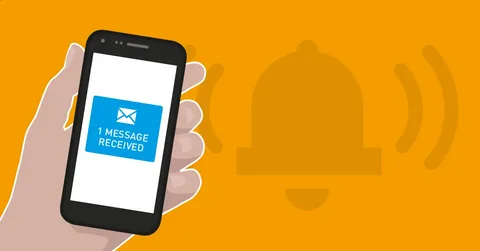Introduction
In today’s fast-paced digital world, businesses and organizations rely on efficient communication channels to keep their customers, employees, and stakeholders informed. An SMS notification system is one of the most effective tools for instant communication. It enables businesses to send real-time alerts, updates, and reminders directly to recipients’ mobile phones, ensuring they never miss crucial information.
This guide explores the benefits, features, and implementation of an SMS notification system, helping businesses maximize their communication strategies.
What is an SMS Notification System?
An SMS notification system is a software solution that allows businesses and organizations to send automated text messages to individuals or groups. These messages can be used for a variety of purposes, including appointment reminders, transaction alerts, promotional messages, and emergency notifications.
Benefits of an SMS Notification System
1. Instant Communication
Unlike emails or traditional mail, SMS messages are delivered instantly. This ensures timely information sharing, making it ideal for urgent notifications such as security alerts or appointment reminders.
2. High Open and Read Rates
Studies show that SMS messages have an open rate of over 90%, significantly higher than emails. This makes it one of the most effective communication channels for businesses.
3. Cost-Effective
Compared to phone calls or direct mail, SMS notifications are a cost-effective solution. They allow businesses to communicate with a large audience without incurring high expenses.
4. Enhanced Customer Engagement
An SMS notification system helps businesses engage with their customers more effectively. Whether sending promotional offers, surveys, or personalized messages, SMS fosters better customer relationships.
5. Automation and Efficiency
With an SMS notification system, businesses can automate their messaging, saving time and improving efficiency. Automated messages can be scheduled and triggered based on specific actions or events.
6. Wide Accessibility
SMS works on all mobile devices, even without internet access. This ensures that messages reach a wider audience compared to emails or app notifications.
Key Features of an SMS Notification System
1. Bulk Messaging
Send messages to a large number of recipients simultaneously, making it ideal for marketing campaigns and mass alerts.
2. Personalization
Customize messages with recipient names or specific details to enhance engagement and improve response rates.
3. Two-Way Messaging
Enable recipients to reply to messages, allowing for interactive communication and better customer service.
4. Message Scheduling
Schedule messages in advance to ensure timely delivery and better organization.
5. Integration with Other Systems
Connect the SMS notification system with CRM, e-commerce platforms, or other business tools for seamless automation.
6. Delivery Reports and Analytics
Track message delivery rates, open rates, and responses to measure the effectiveness of SMS campaigns.
How to Implement an SMS Notification System
1. Define Your Objectives
Determine the purpose of using an SMS notification system. Whether for marketing, reminders, or alerts, having clear objectives helps in choosing the right solution.
2. Choose a Reliable SMS Service Provider
Select a provider that offers high deliverability, robust features, and competitive pricing.
3. Integrate with Existing Systems
Ensure the SMS system integrates with your CRM, customer support, or other business applications for streamlined communication.
4. Segment Your Audience
Categorize recipients based on demographics, behavior, or preferences to send targeted and relevant messages.
5. Create Engaging Messages
Craft concise, clear, and actionable messages that provide value to recipients.
6. Test and Optimize
Regularly monitor message performance, analyze reports, and refine your strategy for better results.
Best Practices for SMS Notifications
- Keep Messages Short and Clear: SMS has a character limit, so ensure your messages are direct and meaningful.
- Use Call-to-Action (CTA): Encourage recipients to take action, such as visiting a website, confirming an appointment, or making a purchase.
- Personalize Messages: Use recipient names or other relevant details to make messages feel more personal.
- Comply with Regulations: Follow local SMS marketing laws and obtain user consent before sending messages.
- Monitor Performance: Track message delivery and response rates to optimize future campaigns.
Conclusion
An SMS notification system is an invaluable tool for businesses looking to enhance communication, improve engagement, and streamline operations. With its high open rates, cost-effectiveness, and automation capabilities, it is a powerful solution for delivering important information instantly.
By implementing best practices and leveraging key features, businesses can maximize the impact of their SMS notifications and create a seamless communication experience for their audience.



